 Selecting & Buying a Building Site
Selecting & Buying a Building Site
Chapter 2 of How to Build Your Dream Home © 2020 InspectApedia.com
- POST a QUESTION or COMMENT about how to identify the architectural style of buildings and building components
How to choose & buy a building site for your home.
This article series provides an updated version of Hubbard Cobb's Your Dream Home, illustrated by Sigman-Ward, first published by Wm. H. Wise & Co. New York, 1950.
From site selection and obtaining financing through each step in construction of a single family home the simple procedures and drawings in this book are still useful for anyone building or repairing a home or other small structure.
InspectAPedia tolerates no conflicts of interest. We have no relationship with advertisers, products, or services discussed at this website.
- Daniel Friedman, Publisher/Editor/Author - See WHO ARE WE?
Selecting The Site And Buying The Plot
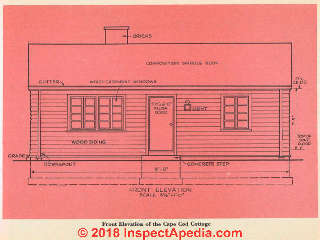 This is Chapter 2 of BUILD YOUR DREAM HOME at InspectApedia.com - online encyclopedia of building & environmental inspection, testing, diagnosis, repair, & problem prevention advice.
This is Chapter 2 of BUILD YOUR DREAM HOME at InspectApedia.com - online encyclopedia of building & environmental inspection, testing, diagnosis, repair, & problem prevention advice.
This web page is also available as SELECTING THE SITE & BUYING THE PLOT [eBook] or as a PDF image at SELECTING THE SITE & BUYING THE PLOT [PDF].
Your first step toward building a home of your own is to find the plot of ground on which to build. This sounds as if it should be easy, but actually it is going to take a considerable amount of time and investigation to make sure the plot is suited to your needs.
Finding the right site for a house means much more than locating a piece of land that is suitable for building at the price you can afford to pay. You not only must find a plot that has the necessary topographical requirements to make it a good building site, but you must also make sure that once the house has been built, it will be a comfortable place in which to live. This means that the site must be located in a pleasant neighborhood, with the desired facilities.
And, quite as important, you will want to make sure that the land and the house you build on it will not decline in value rapidly.
As an owner-builder, there are several special things to keep in mind when you go looking for building sites. In your particular case, one of the most important of these points is whether or not, after you have purchased a piece of land, you will be allowed to build the house, or at least a good portion of it, yourself.
There are several types of restrictions that may prevent your doing the job yourself and, therefore, plots under such restrictions are not suitable.
BUILDING CODES
You will find that most well settled communities have various restrictive building codes. The main purpose of these codes is to insure that each building put up will be a safe place in which to live. The codes are enforced by local building inspectors, who come around while the job is under way to see that the codes are being followed.
Sensible building codes are good for every community to have. They eliminate the danger that a dishonest builder will cut his costs by using inferior materials, or materials that are too small or otherwise unsuited to the job.
The code may insist that foundations in certain soil conditions be set a certain number of feet below the surface to insure that the building will have a good solid base. Unfortunately, however, some building codes go far beyond insuring the safety of construction. Some codes are so strict that they dictate the kind of materials to be used as well as the kind of workmanship that goes into the house.
For example, some insist that all interior walls be made of plaster, despite the fact that plaster board can do the job just as well. Others insist that each house have a full basement, or, if the house has a second story, that there be two means of access to it.
Certain codes state that all the actual construction work must be done by a licensed workman. In the latter case, if you do not have a license, you will not be able to obtain a building permit.
Of course, some codes insist only that certain jobs, such as electrical wiring or the plumbing system, be installed by a licensed workman. But even this can add substantially to the cost of a house you had originally planned to build entirely by means of your own labor.
So before you do anything else, check with the local building authorities, or building engineer, and obtain a copy of the codes. A short conversation with any of the local building officials will probably help clear up any questions you may have as to how much of the actual work you can do yourself and what, if any, special building materials must be used. When you get around to building, be sure to follow these codes at all times.
And while you are with the local building officials, get a copy of the zoning map and zoning regulations, for these contain certain other restrictions about which you must he informed.
ZONING
Zoning regulations are local laws, like the building codes, which govern the type of building that can be erected in certain areas. Their over-all purpose is to protect the investment of the home-owner. A town or city may be divided into a number of areas or zones. Certain zones are given over to industrial purposes. Other zones are set aside for commercial enterprises, while still others are devoted exclusively to residential building.
4. If you build your home in a section that is zoned for residential development only, there is no chance that a factory, a store, or a gasoline filling station will be erected on a lot adjoining yours. In communities where there is no zoning, you do not have this sort of protection. The lots around you are open to any buyer for any purpose.
Having a factory put up right next door to your house can reduce the value of your property for residential purposes to almost nothing, besides making your home uninhabitable.
While the intended purpose of zoning regulations is to protect the value of property, in some communities the regulations are of no more value to you than the paper on which they are written, because they can be changed any time the officials at the city hall feel like changing them.
The best type of zoning regulations are those that can be altered only by the residents of the particular zone when they feel that adjustments of one sort or another are necessary for the general welfare of their zone and the community as a whole. This type of regulation gives you. as a home- and property-owner, a definite part in regulating the development of your zone and community.
Some zoning regulations go only so far as to set aside various areas for the exclusive use of residential building. This means that apartments, hotels, and two-family homes can be put up as well as private one-family dwellings. Other regulations go one step further and set aside certain zones for multi-family dwellings, and other zones for private dwellings.
Lastly, some local regulations even state what the minimum cost of a house in a particular area must be—and perhaps the style of the house. This means that if you want to build a $10,000 Cape Cod cottage in an area that is zoned for $15,000 Tudor houses, you are out of luck.
You will not be able to get a permit. Or you may find that you cannot build a detached garage. Highly restrictive zoning regulations should be studied very carefully, especially if you build in an area that contains ex-pensive homes.
DEED RESTRICTIONS
There is one more type of restriction that you may encounter when it comes time to build your home, and that is a deed restriction. This is a restriction on the type of construction, style of building, cost, etc., that is written into the deed to the plot of land by the seller.
It may have originated several generations back, and be continued through successive sales. Any such restriction is binding on you as the buyer, and while it cannot replace the zoning regulations, it can add to them to make them even more strict.
COUNTRY PROPERTY
These are the three main kinds of restriction that can prevent your build- building your home in an already well ing your home in certain areas. At this built-up community is going to be difficult, you will just by-pass all the fuss and get a piece of property out in the country where there are no laws and regulations and you can build anything you want in any way you want.
that point you may very easily feel that if
This is certainly a way to avoid restrictive building codes, but you may find that if you move way out into the country, it is going to be hard to get financing for your venture. Home-loan agencies often do not care to underwrite construction in areas that are not developed.
Of course, this does not mean that you will not be able to get someone to finance a house just because it is out in the country, but it does mean that if you build in a section where there is no main thoroughfare maintained by the state or town, or where there is no chance of getting electric power or telephone service, it may prove difficult to obtain financial aid.
And, even if you do get funds to start construction, you may discover that having to dig a well, bring in a private road and maintain it, or run in power lines and telephone wires will be too costly.
If you feel that you would prefer to build some distance out of town, it is a simple matter to find out in advance if there is going to be any trouble in getting a lending agency to lend you the money to do the job.
Drop in at a local bank, FHA agency, or any private home-finance company and frankly ask them whether it is advisable to purchase a home or land in the particular section you are considering. If they say, “no,” better think twice before you go ahead and buy the land in question.
Of course, if you have all the ready cash you need, and do not have to depend on outside financing, the world is yours and you can build anywhere you please.
PICKING THE PROPERTY
Once you have found out in which areas the codes and restrictions allow you to build the house you have in mind by yourself, or at least a good part of it by yourself, your next job is to go to these areas and look them over critically.
A house and a piece of ground are an investment — a long-term investment for most of us. You certainty do not want the value of your property to drop suddenly. If it does, you will be losing money just as certainly as if you bought an item for a dollar and sold it the next day for eighty cents. And nothing can be more distressing than having to pay installments on a $10,000 mortgage when the house is no longer worth half that amount, due to a sudden decrease in property value.
The best insurance you can have that the value of your dream property will not decline overnight is adequate zoning regulations, a good local government, and the right kind of people living in your prospective community.
If the area is not properly zoned, industrial or commercial enterprises that may reduce the value of the land in that section can be erected. If the local government is not honest, high taxes and numerous assessments on property may drive out prospective buyers and the value of the property will drop.
And if the home-owners themselves do not keep their properties in good condition, their houses painted, and their lawns cut, they will drag down the appearance of the community, and the property values will be dragged down also.
Appearance of the Area
After you have found an area in which you want to build and checked that it is adequately protected by laws, explore it and do some further checking. The first thing to look for is the style and the condition of the houses.
If they are all in the same general style and price range as yours is to be, it is a good sign. It seems that areas in which the families are more or less in the same general income bracket, with the same general taste in style of dwelling, change less rapidly than those where different levels of income and various costs and styles of houses are all mixed up together. If most of the homes are relatively new, in style as well as appearance, you can assume that this area is on the up-grade.
Do not be too upset if you run into an occasional corner grocery store or gasoline filling station. If the section has been developed only lately, these may have been built before it was zoned, and you may find a few commercial enterprises of this type a great convenience.
Be careful, however, of a section where there are numerous, large, old-fashioned homes.
These are usually a sign that at one time the section was for the higher income brackets, but has now gone down a few pegs. Once a section begins to decline, it can decline very rapidly. It probably will not be too much longer before the large homes are made into apartments and, a few years later, the apartments cut up for roomers.
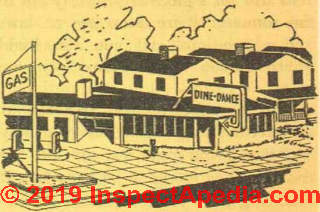
Fig. 1. Observe the general appearance of the neighborhood carefully. If old homes are being turned into rooming houses or undesirable features are beginning to intrude, the process will probably continue and property values will decline.
You will be able to discover a great deal about a section by observing the appearance of the houses and grounds. Homes that are kept freshly painted,
lawns that are cut, and pleasant gardens are all signs that the people in this community are interested in making and keeping their homes attractive. When you find houses in need of paint or repair, rickety fences, and outbuildings that are falling apart, you should be careful.

Fig. 3. A near-by school suitable for the children is a point to keep in mind.
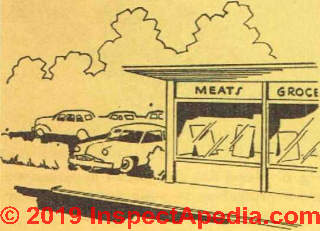
Fig. 2. A shopping center not too far distant from your home is a very desirable feature.
Check and talk with some of the people living in the particular area to see what they think of it. Do they find it a pleasant place to live ? Do they have some of the same interests you do? Is there a nice community spirit that makes itself felt in various civic activities?
You can also find out from the residents if there are any serious nuisances—such as heavy traffic on the roads at night, smoke and dust from distant factories that only appears when the wind is in a certain direction, or other unfavorable points of this sort.
You will also want to check the local tax assessment valuation and tax rate.
Convenience of Lot Location
Once you are satisfied that an area is a good place in which to live, go on to find out if it is a convenient place as well. There are many items on the convenience-list to look into. First, there should be good local schools and some means of transportation to take the children back and forth. There should be a good shopping center, not too far distant, and a church of your denomination.

Fig. 4. While looking over the neighborhood; do not forget to find out whether there is a church of your denomination near-by.

Fig. 5. Transportation is important - transportation to school, to shopping centers, to your place of work, to business or commercial centers.
Location of the Building Lot
If you are far out of the main business and commercial center, there should be some near-by transportation connecting you with it. In sections that are heavily settled, there should be parks and playgrounds for children to give them a place to play other than the streets or vacant lots. Protection for the home and property in the form of a good police department, a good fire department, street lights, and fire hydrants is also important.
If you have particular hobbies or pastimes, you may want to investigate the local facilities for them.

Fig. 6. Good fire and police departments are a protection to your home and may result in lower insurance rates.
PUBLIC UTILITIES at your Building Site
Roads
Once you are satisfied that the neighborhood is suitable, you can start investigating the actual site where you plan to build. First of all, find out if the site is on a public or private road. If the development is rather new, it may still be a private road rather than a town or city road. This means that the town will not do any maintenance work or snow removal, and the original owner may not do anything either after he has sold off all the lots.
Towns usually will take over a private road when a certain number of homes have been built along it, but they may be particular about the construction of the road and not assume responsibility for it until it meets their specifications. If the road is not properly built, you, as one of the property owners along it, may be assessed for the necessary improvements.
Water Supply
The next point to check is whether you will be supplied with city water or must drill your own well. If there is city water, find out by, asking around if the supply and pressure are adequate. Developments far away from the water supply may be troubled with low pressure, and this can be corrected only by increasing the size of the water mains, which will cost you money, or by installing additional pumping equipment in the house. Some local water systems are fine, except that they dry up during droughts, in which case the water may be turned on only during certain periods of the day.
Water from city water mains is tested, and treated if necessary, so that it is pure to drink, but, in some cases, the water contains a good many mineral salts that make it unpleasant to the taste. Hard water, as water containing a high percentage of minerals is called, will also be difficult to use for cooking or laundry purposes.
And, in time, the minerals will coat the inside of pipes so they will have to be replaced. The hardness can be removed by installing water-softening equipment, but this is rather expensive. An adequate supply of soft water is a very important thing to remember in selecting a building site.
The water rate is another, if minor, point to keep in mind.
Power; Telephone
In regard to utilities, check to see if electric power is easily available to your lot, and if there will be a charge for additional poles and service wires to bring in the power. Electric power companies usually bring in power on public roads for a nominal service fee, but if you are building on a private road, you may find that you will have to pay for each pole required to bring the fine from the public road to your house as well as for the necessary wires. This can run into several hundred dollars. The same thing holds true for telephone service. See Fig. 7.
Sewers
The size and location of the street sewer, if there is one, is another point on which to check. Some sewer lines are large enough to handle not only the waste from the plumbing fixtures but the discharge from the roof gutters as well. Sewers for plumbing fixtures only are called sanitary sewers, while those intended for rainfall disposal are called storm sewers.
The advantage of having both types is that you will not have to build dry wells or some other type of well to take care of rain water. The position of the sewer line in relation to the house is also important. If the house is higher than the sewer line, there will be no difficulty with the waste flowing from the house to the sewer.
However, when the house and sewer line are on the same level, you may have to install a special valve in the line to prevent filth from backing up from the sewer main into the house system. For best results, the sewer main should be situated lower
HYDRANT CURB
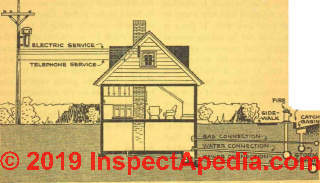
Fig. 7. In choosing the location for your house, be sure to check on the availability of the various public utilities, such as water supply, power and telephone service.
than the basement floor. This allows the plumbing fixtures to be installed in the basement.
If there is no main sewer line, you are going to have to install some private means of sewage disposal, such as a septic tank. This in turn means that you are going to require a fairly large lot, because the drainage field for the tank may have to be over 200 square feet. In most built-up communities, cesspools are prohibited, and, even if they are allowed, they are not as satisfactory as a septic tank.
THE INDIVIDVAL SITE
After you are completely satisfied that the community is all right, and that you can get the necessary services required for modern living, inspect the individual building sites.
Here you will be interested in the topography of the ground, the condition of the soil, and drainage. So far as topography goes, the least expensive plot to build on is one that is perfectly flat. A flat site will require a minimum amount of grading and excavation, and there will be no extras, such as retaining walls and terraces, to eat up your time and funds.
On the other hand, a flat building site is the least interesting. Also, it may not be very well drained or suited to homes with concrete-slab floors.

Fig. 8. Homesites: Some good and bad sites for the Note that the best site is one where the land has a little slope. The perfectly flat site is adequate but uninteresting.
An ideal site is one where the house will be located on a slight rise in the ground. This will insure an adequate view, and there will be enough slope to allow surface water to drain away from the house. It will also render it a simple matter to make connections between the house sewer line and the sewer main, and there will be no possibility of the sewage’s backing up into the house. Be careful, however, of a site with too much slope, for here you will rim into considerable excavation, fill, and retaining walls.
It is all well and good to have an interesting plot of ground that requires imagination to make it suitable for a house, but work of this kind requires money, because excavating and hauling fill is not easily done by the average home-builder.
If you have a site high above the street level or grade, you will need a steep driveway to get to the garage, and a front walk with steps. A garage at the top of a steep slope is all right in summer, but you may find it impossible to get up the driveway in slippery weather. And there is the added hazard, on drives of this type, of the car brakes’ failing, with the car backing down across the thoroughfare.
If you should be wary of sites that are high above the street level, you want to be doubly careful of those far below the street. In the first place, sites like this have a bad habit of becoming extremely wet during heavy rain storms, especially if the street gutters cannot carry the load. In addition, you are still going to have trouble with the driveway and walk.
Beware especially of sites at the bottom of a gully. These are invariably damp, and trying to keep the basement Sites of this type usually have little dry may require a pumping system, or no view. See Fig. 8.
SOIL CONDITIONS
The type of soil on which you build is extremely important. The best soil, from the standpoint of economy, is probably natural soil. You will have a foot or so of topsoil and under it a base of gravel or clay. Having the top soil at hand eliminates the expense of hauling it in later on for landscaping.
You can usually tell if your site has natural soil by the presence of some fairly large trees. Sometimes, however, someone has come in and removed most of the topsoil, leaving only a thin layer. Topsoil less than six inches deep is really not suitable for lawns and gardening. See Fig. 9.

Fig. 9. Watch out for a plot where much of the natural topsoil has been removed. Lawns and gardens will require at least 6 inches of topsoil if they are to prosper.
Base Soil
As for the base soil, gravel, compact sand, and clay are all suitable for home construction. Wet sand is not satisfactory because if too much water mixes with the sand, the result is quick-sand —impossible for building unless you are prepared to spend the time and money to sink foundations down to a solid base. Rock makes a good base for any type of construction, but the cost of excavating it makes it impractical so far as small homes are concerned. It costs a great deal more money to blast and remove rock than it does to dig out gravel and clay, so think twice before you purchase a rocky plot.
You will, of course, encounter small rocks from time to time, but if these can be handled by a power shovel, they should not cause any trouble and can often be used to advantage for footings, foundation walls, and similar purposes.
A great many of the sites found in new developments are built up on fill. Perhaps this particular site was once the town dump, where trash and ashes were placed. In time, these were leveled off and covered with a few feet of gravel and soil.
This makes a very tricky base on which to build, because it will be many years before the fill has really become a compact mass. If you build on the fill as it exists now, your house will settle and cracks will appear in the walls, windows and doors will fail to work properly, and you may find it necessary to invest many hundreds of dollars in additional foundations.
The only satisfactory way to build on filled ground is to sink the foundations far enough down so that they rest on a solid base of gravel, clay, or rock. This means, however, that the cost of your excavation is going to be way up. Sometimes fill is dumped over a low-lying or swampy area. This may appear to be a perfectly sound base, but actually you will be building on a mat of soil that is almost floating on a semi-liquid mass. The weight of the house upon this mat may cause it to sink.
See Fig. 10.
Checking the Soil
You can tell a good deal about the soil conditions just by observation. For example, many large trees are a good sign that the soil is natural and that you will not have to worry about bringing in topsoil or the possibility of fill. Out-croppings of rock are a warning that perhaps the entire site is very rocky.
Soft spots in the ground, depressions, and wet spots after a rain are all indications that the fill may not be solid, and therefore not suitable for the building.
The best and surest way to find out about the nature of the soil is to dig into it, and this it is advisable to do before the final papers are signed. Be sure, however, to obtain permission from the present owner before you undertake this operation.
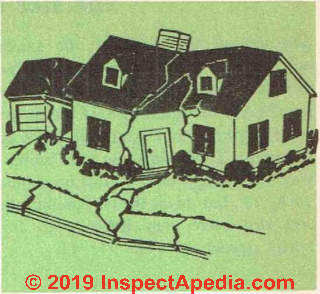
Fig. 10. Be careful about sites that have been built up on fill. In many cases the fill will settle in time and when it does your house will settle with it.
Do not make the mistake of purchasing a plot of ground on the basis of just one visit. Go back again after a rain and see how it is standing up. If the soil seems dry and well drained, that is a good sign. Many low-lying lots can become extremely wet after even a light rain. Almost everyone is familiar with stories about building lots, sold during the Florida real-estate boom, that disappeared under water during the wet season. Don’t be foolish enough to believe that this happens only in Florida. It has happened in lots of other places as well.
An ounce of precaution here, as in other matters, will pay off.
THE SIZE OF THE PLOT
The size of the plot may be taken out of your hands by zoning regulations that insist that each plot in the area be of a minimum size. If the choice is up to you, do not skimp too much at this point. The basic house with breezeway and garage can be built on a plot 50' by 75', but this is the bare minimum and will leave very little space for lawns, garden, etc. See Fig. 11.
Part of the joy of owning your own home is to have a decent-size lawn and garden, a space in back for an outdoor fireplace, perhaps a badminton court, and other recreational devices. You will also want a place where you can get a degree of privacy, and when houses are built one right up close against the other, there is precious little privacy for all concerned.
CHECKLIST FOR CHOOSING THE SITE
Neighborhood
Consider each of the following to determine whether the location of the property will satisfy your personal needs and preferences:
Convenience of public transportation
Stores conveniently located Elementary school conveniently located
Absence of excessive traffic noise Absence of smoke and unpleasant odors
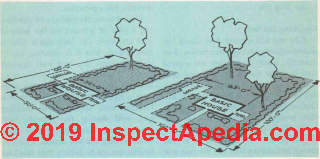
Fig. 11. Keep in mind the size of the completed house when you go looking for a plot. The house placed on a lot with a 50-foot front will have to do without the
breezeway, the garage and the terrace. The house on a lot 100 feet by 100 feet will have room for future expansion and ample grounds for lawns and gardens.
Play area available for children Fire and police protection provided Residential usage safeguarded by adequate zoning
Existing Homes
Observe the exterior detail of neighboring houses and determine whether they are up to your standards in the following details:
Porches
Terraces
Garages
Gutters
Storm sash and screens Weather stripping
Gardens
Size and style of house
The Lot
Consider each of the following to determine whether the lot is sufficiently large and can be properly improved:
Size of front yard satisfactory
Size of rear and side yards satisfactory
Walks will provide access to front and service entrances
Drive will provide easy access to the garage
Lot appears to drain satisfactorily Soil condition satisfactory
BUYING THE PLOT
Once you have found a plot of land that appears to be satisfactory for your purpose, you can get down to brass tacks and start talking about buying it. At this point you will hear a good deal about contracts, title search, easements, survey, quitclaim deeds, etc.
These unfamiliar terms may tend to confuse you and make you wonder if owning a piece of land is really worth all this trouble. Actually, it is not quite so bad as it may appear. Let us examine the various steps that you will have to go through before you assume title to the ground.
Agreement to Buy a Plot of Land
The first thing you sign is a contract or agreement with the seller. This should cover the purchase price, the
method of payment and a description of the property involved. In spite of the fact that you will probably make a down payment on the land when this agreement is signed, it does not actually become binding until you have had time to have the title searched and a survey of the land made so that you will be perfectly satisfied that the seller does have title to the land and that the actual description of the land is correct. When you sign this contract, the seller will furnish you with something called an abstract, which is a record of title of ownership to the land.
Title Search and Land Survey
Now you should go to work and have the title searched and the land surveyed. These are two very important steps, since there are often flaws in titles that may come up later on, after you have built your house, and that can cause you a good deal of trouble.
Have an attorney search the title for you. This is money well spent, as the average layman, who is not familiar with law or real estate, will become lost in a maze of legal terms. While the title search is being made, the land should be surveyed by an engineer and the corners of the plot marked with some sort of permanent marker. Boundary lines, especially those in the country or rural areas, can be extremely vague. When original surveys were made, almost anything standing was used as a marker, and the disputes and lawsuits resulting from the use of such ambiguous markers as “the tall oak’’ are still going on.
Many persons buying an inexpensive piece of land do not bother with either a title search or a survey because of the cost. This is a poor idea. Title to a piece of land means title to anything firmly attached to it, such as a building.
If you go ahead and build a house on a piece of land that turns out later on to be owned by someone else, the house you built as well as the land may pass into the hands of the legal owner. This can be very discouraging. The same situation exists if the boundary lines of a plot are not correct and you build part of your home on the adjoining plot.
Another good reason for a title search and survey is that the average bank will not be inclined to lend you money with which to build unless they are certain that your title to the land is free and clear.
Title Guaranty when Buying Land
Many home owners go one step further than a title search and have the title guaranteed by a guaranty insurance concern. This is a very wise precaution because, as you will see when we take up deeds, even the very best of deeds may leave the buyer hold-ing the proverbial bag unless he is careful about details.
The Deed for your Lot
After the title search has been made, you are ready to sign the deed for the land. This is the legal document that gives to you and your heirs possession of the land. There are two kinds of deed. One is a warranty deed and the other is a quitclaim deed. Of the two, the warranty deed is much the best. This type of deed, besides including a description of the land and the price to be paid, warrants quiet enjoyment of the property by the buyer.
In other words, the seller and his heirs w’ill defend the title against any legal claims. Of course, if you buy the land and some claim comes up against it and the seller or his heirs are not in a financial position to do anything about it, you are still going to be in for some trouble. That is why a title guaranty as well as a thorough title search is so well worth having.
A quitclaim deed promises nothing. In it, the seller passes to the buyer a piece of land for better or for worse. The seller gets out of the whole business and, if any claims come up against the property, the buyer is stuck with them. It is best to stay as far away from quitclaim deeds as you can.
Land Deed Restrictions and Easements
You will also run into several types of restrictions in some deeds. The first is the deed restriction discussed earlier in this chapter, which can restrict the type of construction on a particular piece of land. Another type of restriction, if it may be called that, is an easement. This is a legal means of giving some party other than the owner access and certain rights to the property for various reasons.
For example, if there are electric power lines running across your property, the power company doubtless has an easement on the property to run and maintain those wires. This right or privilege is included in
CHECKLIST FOR BYING THE PLOT
Agreement to Buy Title Search Survey of Land Title Guaranty
the deed so that you, as the buyer, must continue to grant it. Sometimes an easement is granted to private parties, such as would be the case if a driveway or walk to an adjoining home runs through the property. Be sure that you are familiar with any easement in effect on your plot, because easements can seriously effect any future plans you may have.
After the deed for the land has been signed, it must be recorded by the county recorder before it is complete.
As you can easily see, getting legal possession to a piece of land is rather complex, and you should not try to swing the whole thing yourself. Consult with your local bank, real-estate agent, lawyer, and so on, and get all the advice possible before you finally take legal possession.
Deed
Warranty or quitclaim Deed restrictions Easements Recording of deed
...
Continue reading at FINANCING THE NEW HOUSE - next chapter in this book, or go to book contents at BUILD YOUR DREAM HOME, or select a topic from the closely-related articles below, or see the complete ARTICLE INDEX.
Or see these
Recommended Articles
- ARCHITECTURE & BUILDING COMPONENT ID - home
- ARCHITECTURE DICTIONARY of BUILDINGS & COMPONENTS
- ARCHITECTURAL STYLE & BUILDING AGE
- BUILD YOUR DREAM HOME
- CONSTRUCTION DICTIONARY
- GLOSSARY of BUILDING TERMS
- HOME CONSTRUCTION CATALOGS 1950
- KIT HOMES, Aladdin, Sears, Wards, Others
Suggested citation for this web page
SELECTING THE SITE & BUYING THE PLOT at InspectApedia.com - online encyclopedia of building & environmental inspection, testing, diagnosis, repair, & problem prevention advice.
Or see this
INDEX to RELATED ARTICLES: ARTICLE INDEX to BUILDING ARCHITECTURE
Or use the SEARCH BOX found below to Ask a Question or Search InspectApedia
Or see
INDEX to RELATED ARTICLES: ARTICLE INDEX to BUILDING DAMAGE, DISASTER, REPAIRS
Or use the SEARCH BOX found below to Ask a Question or Search InspectApedia
Ask a Question or Search InspectApedia
Questions & answers or comments about how to identify the architectural style of buildings and building components
Try the search box just below, or if you prefer, post a question or comment in the Comments box below and we will respond promptly.
Search the InspectApedia website
Note: appearance of your Comment below may be delayed: if your comment contains an image, photograph, web link, or text that looks to the software as if it might be a web link, your posting will appear after it has been approved by a moderator. Apologies for the delay.
Only one image can be added per comment but you can post as many comments, and therefore images, as you like.
You will not receive a notification when a response to your question has been posted.
Please bookmark this page to make it easy for you to check back for our response.
IF above you see "Comment Form is loading comments..." then COMMENT BOX - countable.ca / bawkbox.com IS NOT WORKING.
In any case you are welcome to send an email directly to us at InspectApedia.com at editor@inspectApedia.com
We'll reply to you directly. Please help us help you by noting, in your email, the URL of the InspectApedia page where you wanted to comment.
Citations & References
In addition to any citations in the article above, a full list is available on request.
- In addition to citations & references found in this article, see the research citations given at the end of the related articles found at our suggested
CONTINUE READING or RECOMMENDED ARTICLES.
- Carson, Dunlop & Associates Ltd., 120 Carlton Street Suite 407, Toronto ON M5A 4K2. Tel: (416) 964-9415 1-800-268-7070 Email: info@carsondunlop.com. Alan Carson is a past president of ASHI, the American Society of Home Inspectors.
Thanks to Alan Carson and Bob Dunlop, for permission for InspectAPedia to use text excerpts from The HOME REFERENCE BOOK - the Encyclopedia of Homes and to use illustrations from The ILLUSTRATED HOME .
Carson Dunlop Associates provides extensive home inspection education and report writing material. In gratitude we provide links to tsome Carson Dunlop Associates products and services.


